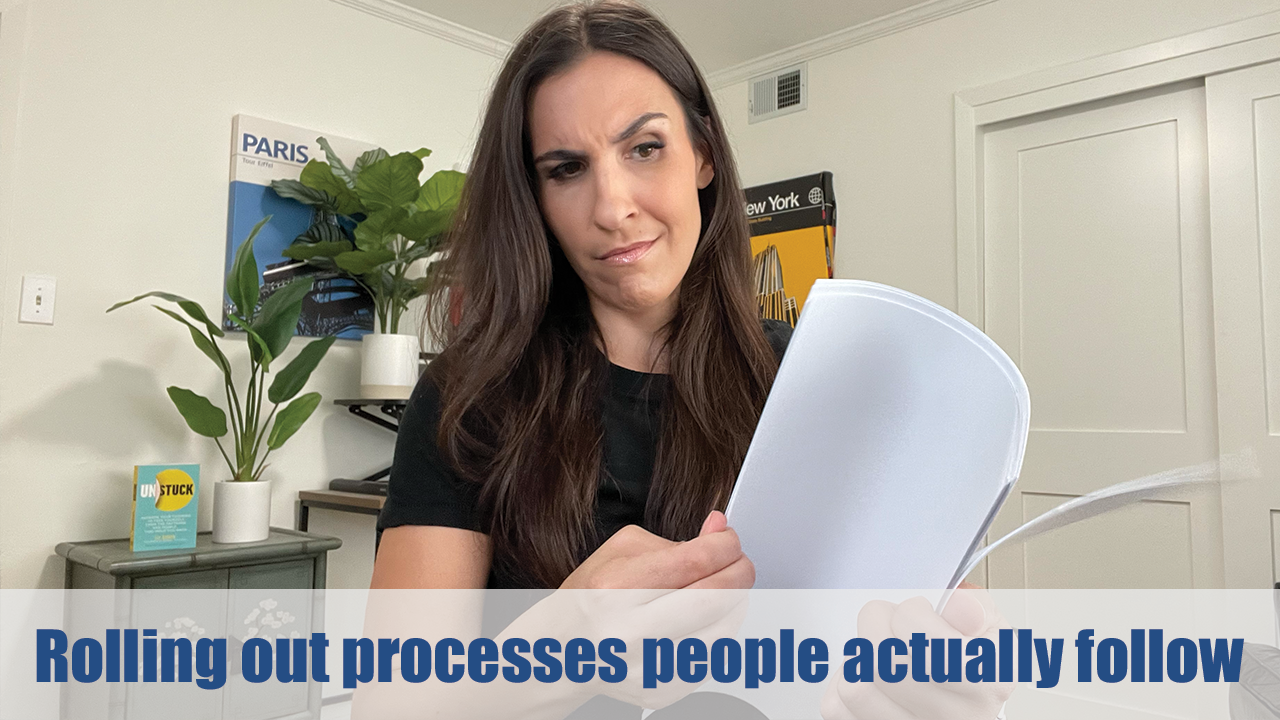Tl;dr: How to roll out processes on your team so people don’t hate you.
I once worked with someone who handed me a 20 page document describing how to run a 30 minute meeting, and immediately thought to myself, yep, this is why people hate ‘process.’
Across a decade working in program management, developing processes to help teams run more effectively within Google, Microsoft, and Apple, if there’s one thing I’ve learned, it’s that process is about subtracting steps, not adding them. In essence, it’s about reducing how something gets done into the simplest terms. When we make processes ultra complicated, even with the best of intentions of being comprehensive and not skipping a single step, we overwhelm people.
We make them hate process… and stop inviting us to meetings 🙁
When I asked the person with the 20 page document how the rollout of their process went, as you can imagine, it hadn’t been smooth.
What should they have done instead?
(1) Ask people what THEY see the pain points as, and design the process there.
Process can get over complicated when bogged down with all of the what ifs that could go wrong. But when we narrow in on what the end users of our process see as the biggest pain points for getting something done, we know where to focus.
I was once responsible for getting a design team to operate more efficiently – “efficient” being something that could be interpreted in many different ways. By talking with the designers themselves, I learned that the biggest obstacle in their way was not having a unified system for tracking their work. With this insight I knew, not only where to start my work, but that any process I would be introducing would be directly solving a need the team saw they had.
When we demonstrate we’re solving something for someone, they’re immediately more bought into adopting the process and can serve as ambassadors when you’re ready to roll it out.
(2) Solicit feedback as you build it
Collecting inputs at the beginning is only half the battle, to get people onboard and keep them on the train, it’s critical to solicit feedback throughout the development of it, as well as in the early stages of rolling it out.
Gathering feedback as you build it ensures you’re not overlooking something that people were hoping to see the process resolve, or worse (and sadly very common), the process isn’t inadvertently introducing more complexity than existed before. When you introduce a fancy new process and people are still tracking their work on post-it’s, it’s a sign you need to ask for more feedback.
Now I will caveat this by saying one process can’t solve everyone’s wishes and desires, and collecting feedback can make a rollout more time consuming. In situations where you keep getting more and more feedback, frame the conversation around the elements that are open for discussion; for example – what columns are important to include in the sheet as opposed to “if we want this process at all.” Scoping the conversation allows you to solicit feedback but not get derailed.
(3) Share the WHY
I alluded to every process designer’s favorite (aka least favorite) question: why are we doing this again? Only to be seconded with: do we even need this? If you’re hearing this, then sadly, you didn’t do enough to paint the picture of what problem you’re solving with the process. Even if the reason for the process RIDICULOUSLY clear to you, it might not be clear to the team, and if you keep getting that question, it’s a slippery slope until people start derailing the process rollout.
When introducing something new, part of addressing real pain points and soliciting feedback includes setting the context on the why. Paint the picture of the challenges in the current state and how they negatively impact the people on the team. Show how this process aims to address the challenges and create a better end state for everyone involved.
And then, there those times when a new process is introduced because your senior management asked for it. We get it. Just tell us the truth.
In these cases, we still connect the dots between the what and the why. And spoiler: it’s not “because someone said so.” A weekly status report isn’t just because your manager wants to be in your business, it’s so they can advocate for more resources or budget for the project – that benefits you. A review process isn’t to cause churn and late stage feedback, it’s to ensure a product is designed to spec.
These reasons remind us that even if a process is something we want to spend time doing, we’re aligned on the goals at the core. If you’re having trouble thinking of the motivations for a process, it might be a sign it’s trying to do too many things.
(3) For the love of god, hold people accountable
Last but not least, this whole thing falls apart INSTANTLY if there’s no accountability. How do we know when there’s an accountability gap? Everyone knows there’s a process but kinda just does their own thing anyway.
Get your leadership team’s buy-in about the process, the goals, and the implementation early on so they can be advocates and champions of following it; and reinforce that they expect their teams to be accountable to it.
Make the process easier to adopt by doing a little hand-holding at the beginning. This will give you an opportunity to see first-hand how the rollout is going, giving you more feedback to continue to make it easier to use; and gives your upper management something to point to for how they’re making the rollout more painless.
As much as it breaks my hearts, if you build it, they won’t just come. People don’t often jump in and start following a new process just because you sent an email out about it. They need to know what’s in it for them and what problems it’s solving. They need education/onboarding and opportunities to share feedback.
If this sounds like it’s more work, let me tell you first hand – it’s not more time consuming than having rolled out a new process and having to scrap it and start over because people weren’t bought in or it isn’t actually solving problems people believe exist.
So let’s reframe “if you build it, they will come” to “if you ensure you’re solving the right problems, set the context, share the why, AND hold people accountable… they will come.” This is where you start to see the transformation, the time savings, and the overall increase in effectiveness that you set out to achieve.
**
We’ve only scratched the surface here, I mean, I could literally talk about process optimization ALL DAY. To learn more about how I can help your team drive more efficient and effective processes, or for how you can up your own process game, reach out to lia@liagarvin.com.


